#séance in the asylum
Text


Séance in the Asylum #1 by Clay McLeod Chapman and Andrea Mutti. Cover by Mutti. Variant cover by Trevor Henderson. Out in July.
"1865. Defrauded spiritual medium Alicia Wilkinson is brought to The Ashcroft Hospital at the behest of Dr. John James Templeton. He offers Alicia a second chance to revive her once-thriving career: perform a séance amongst the patients in order to drawing out their mental maladies. Alicia performs her first series of séances with the patients - including traumatized soldiers returning from the Civil War, women whose sanity has slipped through their fingers - only to realize their sessions might work all too well. What no one knows is Alicia is a fake. A liar. A cheat... So why are the patients suddenly acting possessed?"
#séance in the asylum#seance in the asylum#alicia wilkinson#dark horse comics#clay mcleod chapman#andrea mutti#trevor henderson#variant cover#horror#comics
4 notes
·
View notes
Text
Comic Crypt: Dark Horse Conjures New Horror Series SÉANCE IN THE ASYLUM!

View On WordPress
0 notes
Text
Making up more random ass scenario cuz I can and in school
Scen.1 }
Pov; the waf cast gets stranded in Indonesia and has no idea how to speak the language
Katelyn; we are lost and doomed
Aphmau; You can say that again
Lucinda; Travis put yourself to use please
Travis; apa pulang kam nyerang aku sama ini jir
Garroth; what did he just say?
Aphmau; I have no idea
Zane; is that even the language?
Scen.2 }
Pov; Hero, villain, vigilante au
H!(name) = hero
V!(name) = villain
G!(name) = vigilante
C!(name) = civilian
H!aphmau; we're never gonna catch these guys
H!Garroth; c'mon be a bit more enthusiast! We'll catch them eventually
G!Laurance; oh please, you needed a vigilantes help to catch emerald blue (Ein)
C!Vylad; correction we needed everyone's help that we can get
G!Zane; we did have a common enemy
C!Cadenza; why did you guys drag civilians into this?
H!Lucinda; yea I kinda don't understand that they're only related to Villains,Heros, and vigilantes
H!Melissa; like we said, the more the merrier and besides even for not being villains heros nor vigilantes you all have powerful abilities
G!Katelyn; yea gotta give it to y'all you were powerful
G!Travis; Can we like, go back home now?
H!Dante; I wouldn't mind if we stayed here a bit longer~
V!Gene; okay no that's stupid, knight (Dante) we are going home
G!Sasha; Yea let's go Gem star (Travis)
G!Travis; Cya knight~
H!Dante; *giggling to himself*
H!katelyn; Ew love
C!Cadenza; I think they're cute!
G!Laurance; you think every couple is cute
H!Teony; True
Scen.3 }
Pov;the not alone buddeis + Dante & Sasha gets stuck in a haunted asylum
Vylad; we are so going to die here alone!
Aphmau; w-we'll be fine! We'll just have to..stick together! Yea yea stick together!
Dante; I'm so scared right now..
Travis; why?
Sasha; I should've brought my séance gear
Dante; you shouldn't even have that!
Travis; I have candles and chalk in my bag
Aphmau; WHY TF DO YOU HAVE CANDLE AND CHALK?!?!??
Travis; I always carry candles and chalk around!
Vylad; we are dying in this asylum
Scen.4 }
Pov; it's game night for the lovers lane cast
Gene; *stuck in silent jail*
Sasha; *ready to murder everyone in the room*
Zenix; *just chilling with his 10th property*
Katelyn; *bout to rage*
Lucinda; *is actually dying inside*
Aaron; *somehow has so much money*
Aphmau; *is way to competitive to have mercy*
Zane; *is like half asleep*
Garroth; *really feels like throwing the game board out the window*
Laurance; *the one that actually threw the Uno cards out the window last game*
Dante; *is just scrolling through his phone in the corner*
Travis; *is actually asleep in Dante's arm without realising*
I love making these
#aphblr#mystreet#travis valkrum#dante aphmau#gene aphmau#aphmau sasha#aphmau zenix#zane ro'meave#vylad ro'meave#garroth ro'meave#laurance zvahl#cadenza zvahl#aphmau teony#aphmau lucinda#aphmau katelyn#aphmau#ein aphmau#aphmau aaron#multilanguage#villain#hero#vigilante#au#random scenarios#Random povs#gamenights#I love making these so much cuz they are hilarious#like dude yes#they are such good use#shipping Danvis
13 notes
·
View notes
Text

Hello, Simmers! 👻
Are you ready for an entire month of spine-tingling room creations that will haunt your dreams? 🕷️
Unleash your spooktastic creativity and showcase your eerie masterpieces using #WHEELIESPOOKY23
🦇 See you October 1st for a hauntingly good time! 🦇
🎃Create a 4x4 room, with any wall height (or no walls at all, it is totally up to you)
🎃No CC
🎃TOOL mod is ok
🎃It Doesn't have to be functional
Here is the list of room ideas for each day, if you have trouble reading from this poster:
01 - Haunted Kitchen
02 - Forgotten Fountain
03 - Zombie Apocalypse Bunker
04 - Spectral Library
05 - Cursed Mirror Parlor
06 - Creepy Painting Studio
07 - Haunted Ball Pit Playroom
08 - Mad Scientists Lab
09 - Witch's Potion Chamber
10 - Paranormal Investigator HQ
11 - Séance Chamber
12 - Vampire's Resting Place
13 - Creepy Motel Room
14 - Abandoned Classroom
15 - Cursed Treasure Vault
16 - Haunted Attic
17 - Abandoned Asylum
18 - Coven Gathering
19 - Haunted Dining Hall
20 - Creepy Doll Nursery
21 - Werewolf's Den
22 - Cursed Graveyard
23 - Enchanted Forest Altar
24 - Spooky Mermaid Cave
25 - Haunted Music Room
26 - Haunted Artifacts Exhibit
27 - Witchy Greenhouse
28 - Alien Experiment Chamber
29 - Haunted Theater Stage
30 - Witch's Potion Party
31 - TRICK-OR-TREAT PORCH
#wheeliespooky23#the sims 4#sims build#ts4 simblr#simblr#ts4 challenge#sims 4 challenge#roomchallenge#ts4roomchallenge#october challenge#spooktober
2 notes
·
View notes
Text
Conspiracy Theory: Pinocchio
This is for @mimssysciest and the fact that they liked this. Thank you so much for doing this.
So if the dead boy was named Kiefer, then, potentially, what if Geppetto lost a child? Or, someone else did and commissioned Geppetto to make a marionette with the same name? If this was the case, then this person, most likely a parent or caretaker, wanted to participate in supernatural possession or creepy shit, which is likely. He is from the 1800s, and at the time, séances had taken the world by storm, so it's likely that this could be the case. If it was the case, then the marionette was purposely made for Kiefer to possess. However, possession is not the same as having a second chance at life, and the fairy godmother saw this, so she gave Kiefer, whom she took pity on, a second chance to live and be a boy. The caretaker, who dies due to old age or disease (also likely), ends up leaving the marionette with Geppetto whom raises him as his own.
OR, Geppetto made Pinocchio as when people do art (woodmaking is, in my opinion, at times an art) they put their emotions into it, and he put his emotions of grief, sadness, and anger with himself into it. Kiefer, who watches over his father, sees this and mourns himself, and the fairy godmother notices, and gives Kiefer a second chance to be with his father. The emotions caused the fairy godmother to manifest in his life, to notice Geppetto.
Lastly, here's the darkest theory I have: Geppetto is a schizoprenic who is a carpenter as it is one of the only jobs he can do. At this time, schizophrenia went undiagnosed or you were put into an insane asylum, so he kept to himself. Due to the voices and seeing a "fairy godmother," he believes the marionette came alive. This would also explain him being in a whale, as, if I'm being honest, made no sense in the story. He, instead, locked himself in his basement by accident but saw the basement as a whale. He then "raises" the marionette, but he just totes it around. When Pinocchio is alone and by himself in the book and movie(s), they are simply dreams that Geppetto has.
2 notes
·
View notes
Text
Clay McLeod Chapman and Andrea Mutti conjure a Séance in the Asylum
Clay McLeod Chapman and Andrea Mutti conjure a Séance in the Asylum #comics #comicbooks

View On WordPress
#andrea mutti#clay mcleod chapman#comic books#Comics#dark horse#Dark Horse Comics#francesco francavilla#Jenna Cha#lukas ketner#seance in the asylum#trevor henderson
0 notes
Photo

CLAY MCLEOD CHAPMAN AND ANDREA MUTTI CONJURE THE NEW HORROR SERIES “SÉANCE IN THE ASYLUM” from @DARKHORSECOMICS! #comics #comicbooks https://ow.ly/hNoF50QU9Fu
0 notes
Text
Certainly! Here are 30 duo montages featuring Phobus's intense fear and Tristesse's deep sadness:
Montage 121:
Phobus and Tristesse in a dark, spooky haunted house.
Phobus trembles in fear at the eerie surroundings.
Tristesse walks alongside, her expression already filled with sadness.
Montage 122:
In a stormy, thunderous night.
Phobus cowers in fear at each loud clap of thunder.
Tristesse watches the storm through a window, tears glistening in her eyes.
Montage 123:
Phobus and Tristesse on a turbulent airplane.
Phobus grips his seat in terror during turbulence.
Tristesse clutches her seat, her sadness deepened by the fearful atmosphere.
Montage 124:
In a dark, ominous forest at night.
Phobus stumbles through the trees, scared of imaginary creatures.
Tristesse walks quietly, her sadness blending with the eerie surroundings.
Montage 125:
Phobus and Tristesse in a dimly lit, creepy graveyard.
Phobus shivers in fear, imagining ghosts lurking among the tombstones.
Tristesse stands by a gravestone, her tears flowing, grieving for the departed.
Montage 126:
In a tense, suspenseful horror movie theater.
Phobus jumps and screams at every jump scare on screen.
Tristesse watches the horror film, her eyes wet with sorrow over the terrifying scenes.
Montage 127:
Phobus and Tristesse during a dark and eerie nighttime walk.
Phobus constantly looks over his shoulder, fearing unseen threats.
Tristesse walks slowly, her sadness deepened by the eerie silence.
Montage 128:
In a spooky, candlelit mansion.
Phobus tiptoes through the mansion, scared of every creaking floorboard.
Tristesse sits quietly, her eyes filled with tears, mourning the unknown history of the place.
Montage 129:
Phobus and Tristesse on a misty, foggy moor.
Phobus imagines eerie creatures in the mist, trembling with fear.
Tristesse stands amidst the fog, her sadness blending with the mysterious landscape.
Montage 130:
In a creepy, abandoned asylum.
Phobus clutches his flashlight, scared of every shadow and sound.
Tristesse sits against a decaying wall, her tears staining the dusty floor.
Montage 131:
Phobus and Tristesse in a haunted corn maze at night.
Phobus runs in fear, imagining menacing figures among the cornstalks.
Tristesse walks through the maze, her sadness intensified by the eerie atmosphere.
Montage 132:
In a dark, eerie cave.
Phobus trembles in fear, imagining creatures lurking in the shadows.
Tristesse sits in a corner, her tears echoing in the cavernous silence.
Montage 133:
Phobus and Tristesse during a spooky ghost tour.
Phobus jumps at every ghostly sound or flickering light.
Tristesse listens to the guide's stories, her eyes brimming with tears for the tragic tales.
Montage 134:
In a haunted, dark amusement park at night.
Phobus screams in terror on haunted rides, convinced of real ghosts.
Tristesse watches from a distance, her sadness deepening with each scare.
Montage 135:
Phobus and Tristesse during a suspenseful, eerie escape room.
Phobus panics at every unexpected puzzle or hidden door.
Tristesse tries to solve puzzles, her sadness blending with the mysterious setting.
Montage 136:
In a creepy, fog-shrouded cemetery.
Phobus imagines ghosts among the tombstones, trembling with fear.
Tristesse stands among the graves, her tears falling for the departed souls.
Montage 137:
Phobus and Tristesse on a dark, stormy beach at night.
Phobus fears the crashing waves and dark shoreline.
Tristesse stands by the water, her tears mixing with the rain.
Montage 138:
In a shadowy, eerie forest during a thunderstorm.
Phobus runs in fear, convinced that trees hide menacing creatures.
Tristesse walks slowly, her sadness deepening with each clap of thunder.
Montage 139:
Phobus and Tristesse during a spooky, candlelit séance.
Phobus quakes in fear as the medium invokes spirits.
Tristesse watches with tears in her eyes, mourning the spirits' plight.
Montage 140:
In a mysterious, abandoned circus tent at night.
Phobus imagines creepy clowns and eerie performances, scared to move.
Tristesse sits among forgotten circus props, her tears reflecting the circus's tragic history.
Montage 141:
Phobus and Tristesse in a chilling, abandoned sanatorium.
Phobus shivers in fear, convinced of haunting spirits.
Tristesse walks the dark halls, her sadness blending with the building's ominous history.
Montage 142:
In a gloomy, deserted ghost town.
Phobus imagines ghostly apparitions in the empty streets, trembling with fear.
Tristesse walks through the town, her tears falling for its forgotten past.
Montage 143:
Phobus and Tristesse during a spooky, candlelit ritual.
Phobus panics as the ritual invokes ancient spirits.
Tristesse watches with tearful reverence, feeling the weight of the supernatural.
Montage 144:
In a haunted, dark mansion.
Phobus tiptoes through the mansion, scared of every creaking floorboard.
Tristesse sits quietly, her eyes filled with tears, mourning the unknown history of the place.
Montage 145:
Phobus and Tristesse on a foggy, moonlit graveyard.
Phobus imagines ghosts rising from their graves, trembling with fear.
Tristesse stands among the tombstones, her tears falling for the restless spirits.
Montage 146:
In a dimly lit, eerie theater during a suspenseful play.
Phobus jumps at every unexpected sound or shadow on stage.
Tristesse watches with a mournful expression, empathizing with the characters' sorrow.
Montage 147:
Phobus and Tristesse during a spooky, moonlit hike.
Phobus fears every rustling in the woods, trembling with fear.
Tristesse walks through the forest, her sadness deepening with the eerie sounds.
Montage 148:
In a shadowy, eerie cave.
Phobus trembles in fear, imagining creatures lurking in the shadows.
Tristesse sits in a corner, her tears echoing in the cavernous silence.
Montage 149:
*Phobus and Trist
esse on a dark, stormy beach at night.*
Phobus fears the crashing waves and dark shoreline.
Tristesse stands by the water, her tears mixing with the rain.
Montage 150:
In a creepy, fog-shrouded cemetery.
Phobus imagines ghosts among the tombstones, trembling with fear.
Tristesse stands among the graves, her tears falling for the departed souls.
These montages showcase the contrast between Phobus's intense fear and Tristesse's deep sadness in various eerie and suspenseful settings. If you'd like to explore more scenes or interactions with these characters, please feel free to ask.
0 notes
Text
me conducting a séance and holding the spirit of Bob Kane hostage: tell me about Arkham Asylum's records schedule
the spirit of Bob Kane: please let me rest, who are you, where am I-
me: tell me you son of a bitch, did they use stratified sampling??
#batman#bob kane#archivist brain meet batman brain#arkham asylum#gotham#very niche audience for this post
1 note
·
View note
Text
Cincinnati Was Enchanted By The Weird & Mysterious Spell Of The Ouija Board
Every so often, a compulsion to contact spirits from beyond the grave possesses Cincinnati. For a time, séances were as common as church festivals here and the mainline churches fretted that Spiritualist cults would siphon away congregants. Card readers and crystal-ball gazers have occupied veiled storefronts as long as our city has had storefronts. From 1890 to 1920, the preeminent supernatural fad in Cincinnati was the Ouija board.
Although homemade “talking boards” had been employed in Spiritualist practice for many years, commercially produced Ouija boards did not became widely available until the 1890s.
From its first introduction, Queen City media tut-tutted about the talking board craze, predicting only two possible outcomes for participants: insanity or damnation. The Catholic Telegraph [19 August 1920] claimed both:
“‘Ouija’ is sending them to St. Elizabeth, the national hospital for the insane, by the score. At the Washington Asylum hospital, fifteen devotees of the spook board are now being watched by the alienists. ‘If Washington residents continue to ‘monkey’ with occult Ouija,’ said one of the physicians, ‘we will have to have an addition to the local staff.’ Do not imagine that manipulation of the Ouija board is only a harmless method of recreation. It is playing with fire—Hell fire.”
One of the first Ouija incidents recorded by the local media seemed to bear out at least the insanity option. The Cincinnati Enquirer [9 May 1892] spotlighted Mr. & Mrs. John Chapman from Liberty, Indiana and their outrageous, Ouija-inspired, misbehavior. Alarmed by screams and pounding noises, neighbors discovered the Chapmans carving circles on the walls and floors of their house, using hedge knives and scythes, while threatening to kill their own children and various relatives. They had chopped all their carpets to ribbons and smashed most of their furniture.
“Mrs. Chapman’s great delusion is that she wants to make every body a Mason. She claims Horace Greeley ordered her to do so and the Ouija board also tells her too. It is this Ouija fad that has caused the crazed condition of Mr. and Mrs. Chapman. Hundreds of these boards have been sold in this county and it will not be strange if there are other cases of insanity from its use to be reported from this city soon.”
A couple of years later, a whole community just outside Harrison, Ohio went on a treasure-hunting rampage, all because of a Ouija board. One evening, according to the Enquirer [23 February 1894] an apparently persuasive “prominent gentleman” of the area consulted his brand-new Ouija board and learned that substantial treasure was buried in Southgate, Indiana, just north of St. Leon.
“So impressed was he by the answer that he called a mass meeting of the citizens of that hamlet to organize an expedition to go to Southgate and endeavor to find the precious stuff. They started about three days ago, 50 anxious men forming the company, and from a report received here this morning, they have dug over a field covering seven acres, but without success.”
The Ouija craze produced celebrities and they visited Cincinnati. Among the most famous was Pearl Lenore Curran, who stopped by Cincinnati’s Grand Hotel, bringing in tow a spectral visitor named Patience Worth who claimed – through Ouija sessions – to have lived in England from 1649-1694. Dutifully transcribed by Pearl’s husband, John H. Curran, Patience Worth transmitted hundreds of poems, seven novels, some short stories and even a couple of plays via an apparently frenetic planchette. Cincinnati Post reporter Cynthia Grey published [13 November 1915] a “conversation” with the spirit of Patience Worth:
“Mrs. Curran is young and good-looking. There was nothing mysterious about her or the way she ‘talked’ with ‘Patience.’ She simply laid the Ouija board across our knees and told me to put my fingers on the pointer with hers. I felt a thrill when the pointer began to move swiftly from letter to letter.”
The Ouija fad really took off in 1920, apparently because many people wanted to contact relatives or friends who had died during World War I or during the 1918-19 “Spanish Flu” pandemic. Regardless of psychic potential, young people discovered that the Ouija board gave them an excuse to sit knees-to-knees in dimly lit rooms.

Cartoonists had a ball with Ouija-themed gags. Rube Goldberg portrayed people paralyzed with indecision until they consulted the Ouija board about purchasing formal attire or ordering dinner or making a telephone call. Walter Allman’s “Doings of the Duffs,” portrayed a sleepwalking wife frightening her husband by interrupting his Ouija session. Roy Grove’s “The Boys In The Other Car” portrayed a gang of commuters trying to get a Ouija board to tell them who among their fellow passengers was hiding some booze. All of these strips were syndicated by Cincinnati’s E. W. Scripps Company.
Throughout 1917, with the United States entering World War I, Cincinnati Post writer Alfred Segal invited readers to send reports of their Ouija sessions to be printed in his “Village Gossip” column. He ran dozens of reports, most suggesting a quick end to the war, a United States victory and horrible consequences for the German Kaiser. One of his correspondents claimed to have chatted with Abraham Lincoln.
Foremost among Ouija’s detractors, surprisingly, were the Spiritualist churches. After a century trying to gain respectability for their beliefs, the thought that their religion should be reduced to a parlor game was infuriating. The Enquirer [24 June 1920] reported high dudgeon at a Spiritualist convention:
“Inference that the Ouija board is controlled by spirits was resented by the delegates. Discussion today developed strong possibilities of a nation-wide movement to put down what one speaker referred to as a ‘slander against our religion’ for which the Ouija board was held responsible.”
It may have been too little, too late. The Cincinnati Post [7 August 1920] quoted eminent authorities assured that the Ouija board and similar activities were heading toward the dustbin of history:
“The popularity of the Ouija board and other forms of spiritualism is waning. Institutions for the feeble-minded have fewer ‘spook’ patients and fewer books on occult subjects are being circulated by libraries.”
If the Ouija board had anything to say about that, it went unrecorded.

10 notes
·
View notes
Photo

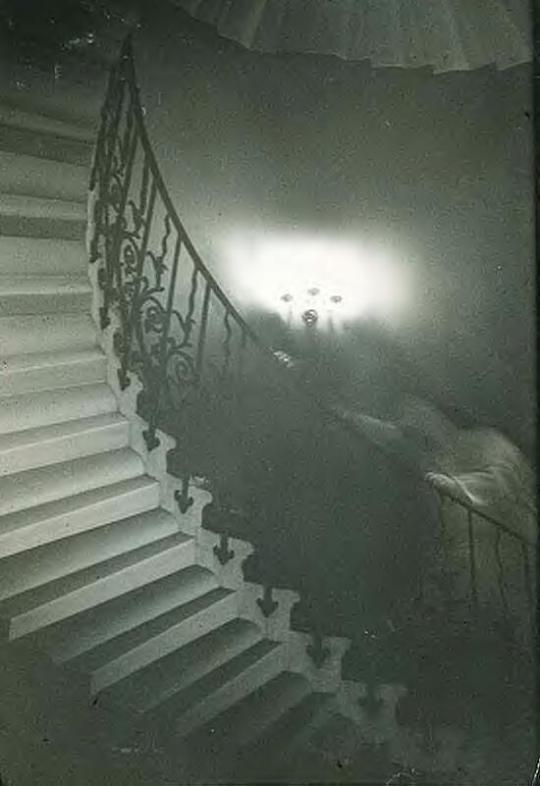
Queen’s House and the Tulip Staircase
It was at this house where the famous Tulip staircase ghost photograph was taken.
Queen’s House is located in Greenwich, London. King James l commissioned the architect Inigo Jones to design a home for his wife Anne of Denmark in 1616.
Jones’ design represented a shift in English architecture. It was the first neoclassical building in England. It contrasted starkly with the then prevalent Elizabethan architecture, which often showcased red bricks, turrets and towers.
This new home was the King’s way of apologizing. He had cussed in front of his wife after she accidentally killed his favorite dog during a hunt. Anne although was never to live in the home. She died in 1617 when only the first floor was complete.
In 1629, Charles l, King James son commissioned work resume on the home for his French wife, Henrietta Maria. It was completed in 1836. She did not live in the home for very long. She was forced to flee to France during the Civil War. While in exile she heard her husband had been executed.
Henrietta returned to England after her son Charles ll was restored to the throne. She lived at Queen’s House until 1662.
In 1805, George lll gave the house to a charity. It became the Royal Naval Asylum for orphans of seamen.
In 1934, the building housed the National Maritime Museum. Today it is owned by the Royal Museums of Greenwich and has an art gallery that displays works by Gainsborough, Reynold, Turner and Hogarth.
In the 1960s the Queen’s House became famous when a ghost was photographed on a Tulip staircase that is just to the left of the home’s Grand Hall.
The motif on this staircase’s iron handrail is actually lilies not tulips.
The retired Reverend Ralph Hardy and his wife from White Rock, BC, Canada were visiting the Queen’s House when they took a photograph of this beautiful staircase in 1966.
It was not until they returned home and had their film developed they discovered something was amiss with the photo they took of the stairs. There was an unexpected image.
It was a shrouded figure that appeared to be ascending the stairs in pursuit of another figure. The reverend and his wife insisted the staircase was clear when they took this photo.
Experts from Kodak examined the original negative and concluded it had not been tampered with.
Seven members of England’s Ghost Club visited the house a year later and investigated. They held a séance but found no conclusive evidence.
Other witness reports indicate the Queen’s House is haunted. Common reports include people hearing phantom footsteps and seeing dark entities near the Tulip staircase. Doors are heard slamming and choral chanting by children is heard. Tourists report being pinched by an unseen hand.
One pale female apparition is seen at the bottom of the staircase frantically cleaning up blood from the floor. The story goes that a maid 300 years ago was thrown from the highest banister, plunging 50 feet to her death.
A gallery assistant reported a recent sighting in 2002. He was discussing a tea break with two colleagues when he saw the door to the Bridge Room close by itself.
“Then he saw a woman glide across the balcony, and pass through the wall of the west balcony.”
This assistant stated he could not believe his eyes, he said he went very cold and that the hair on his neck and arms stood up.
He and his colleagues then dashed to where they could see the Queen’s Bedroom. They all saw something pass through the anteroom and then out through the wall.
He stated this female apparition was dressed in a white-grey crinoline dress.
#Queen’s House and the Tulip Staircase#ghost photo#paranormal#ghost and hauntings#ghost and spirits#haunted salem#myhauntedsalem
30 notes
·
View notes
Text
209. The Deep, by Alma Katsu
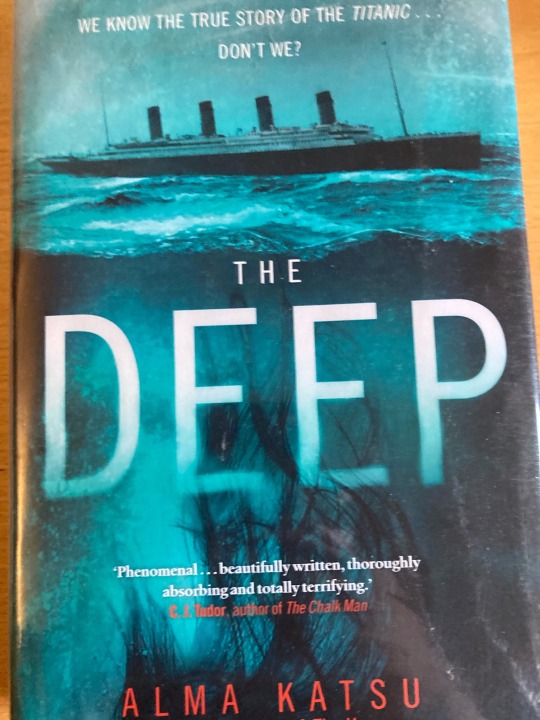
Owned?: No, library
Page count: 417
My summary: Annie Hebley is released from an asylum in Liverpool, amnesiac and alone, to work on the hospital ship the Britannic, sister ship to the doomed Titanic. She survived that ship, despite the misfortune that seemed to surround her - but when someone from her past arrives on the Britannic, old memories start to resurface. Just what happened in that doomed first voyage? And how does it affect what’s happening now?
My rating: 3/5
My commentary:
This was something of a disappointment, I’m not gonna lie. I mean, it was a perfectly fine book for what it was. But I was expecting a sort of historical fantasy thing, and this was more just a romance with supernatural elements set in the 1910s. Which is, you know, not a bad thing in and of itself, it just wasn’t really what I was looking for.
Typical for stories set on the Titanic, we have an ensemble cast of characters, though the main one is Annie. The framing device with the Britannic is just that, with most of the action taking place in the past on the doomed first voyage of the Titanic. I felt like most of the characters here were archetypical for this sort of story - mostly upper-class toffs with dark secrets, a few maids and servants, and the odd lower-decks ruffian for flavour. I didn’t really connect with most of them, though the mystery surrounding their stories and how this ties into Annie’s present day voyage on the Britannic was an interesting enough throughline.
The supernatural element here is...confusing. It all comes out in a big way towards the end, but it’s more of a subtle thing throughout most of the narrative, mostly surfacing in superstitions and séances that can be ignored by the inattentive. I get what the author was going for, but I don’t really think it worked for me. I sort of forgot that there was meant to be anything actually explicitly supernatural in this story, and when it all was revealed at the end it wound up feeling a little out of place, especially as it all kind of gets infodumped at once.
So the real main thrust is the love story, and if you know me, you know romance ain’t my thing at all. No criticism of the genre at large, just not for me. And that’s a large part of why I failed to connect to this book - ultimately, I just didn’t care about the rivalling relationships of these people. That’s really all there is to it, I’m afraid.
That’s all I have to say here, join me next time for a harrowing story of slavery and family in America’s past.
3 notes
·
View notes
Text
25x25 Review - Haunted Edition 👻 (LOCKED in a HAUNTED Prison Cell (abandoned))
I love how they just happen upon these things sometimes, that’s so cool. And poor Roxanne for having to drive these idiots to a place she’s never been with the risk of being arrested.
Nate and his map is the best part. Colby should stop dissing it lol
Seychelles has a lot of police (?) dogs apparently, wow.
Video that glitches but the audio is perfect is such a strange effect. Like the audio isn’t even cutting out at all just the weird video. Almost creepier.
I get bugs and stuff, but pants? Guys. Look at the weather.
Go against the law smh. Should’ve scoped the place out in the daytime. Super bad planners.
I love Nate. This is just a fact at this point.
Colby and the snails. This boy.
They brought the ghost stuff? What was that for originally? Or do they just keep that stuff on hand? And idk if I trust the ghost light thing (forget the name) because there could be so many factors to make it go off. Plus is looks super cheap tbh 😂
I’m all for abandoned places but like abandoned prisons have that extra creepy factor just because it’s a prison. Like on the same level as abandoned asylums or hospitals.
What would they do if they couldn’t get the doors back open? Like they said Sam was actually locked in it, what if they couldn’t get the door open? It’s an old building. Idk that’s a fear of mine now ig.
Nate coming at us with FACTS
Side Note: Sam the fanny pack over the chest is ugly as hell 😂
Return of the séances. Don’t do one at the clown motel where the vibe was but let’s do one in an abandoned place that we don’t know if it’s haunted. Okay I’ll stop being salty about that video now.
The silence of the séance was actually really nice. Gave that part of the video a cool vibe.
I never really hear anything when they put *LISTEN on the screen but I don’t watch these with headphones super loud so that could be on me.
Side Note: Sam’s old red hat making an appearance in this vid. How long has he had that thing?
Towards the end of the video it really held my attention. I don’t know what it was but it really captivated me. It was super interesting to watch each of them ask questions and then their reactions to the noises.
I’m really glad they invited Roxanne to do that with them.
Sort of excited for next week’s video. Kinda bummed it’s going straight back into the haunted stuff right away, was hoping they wouldn’t dive head first back into that but whatever. Gonna miss the Seychelles videos (was this the last one?) and seeing Nate and Justin but hopefully Kat and her friend are worthy (for lack of a better word) replacements.
5 notes
·
View notes
Text
Great Zilches of History

Film is light. There are times, though, when that light may take on a Stygian cast, burning with a flamme noire severity, a weird and otherworldly keenness. Or it may burn lurid and loud — especially if it’s a very old film, acting like a séance that summons the unruly dead. The darkness in cinema best typified by that form we call film noir is in its essence an extension of the peculiarly American darkness of Edgar Allan Poe.
Early, nitrate-based film stock, with its twinkling mineral core, gives Poe's crepuscular light its time to shine and thereby illuminate the world. No longer held in the solitary confinement of a page of reproduced text or an image, frozen, rendered in paint or ink. Poe's singularly tormented vision is finally written alchemically, in cinematographic rays beamed through silver salts; into moving images of such aggressive vitality as to blast every rational thing from one's mind. A Black & White image flipped into negative makes black fire, or black sunlight such as illumines Nosferatu’s Transylvanian forests, through which a box-like carriage rattles at Mack Sennett speed. But with the slightest underexposure, a little dupey degradation of the print, or even a little imagination (such collaboration is not discouraged), this liquid blackness will spread everywhere and anywhere, the most luminous pestilence known to creation. Be it in the laughing nightmare of Fleischer cartoons of old (Out of the Inkwell, indeed) or John Alton’s vision of the night, we are left to wonder: is daylight burning out the corner of a building, or is it the blackness of the building which is eating into the sky?
As with many such questions, film permits us no easy answer. We are simply to watch as the characters smudge. As their shadows pulsate and flicker, emanate out beyond themselves. But if Poe represents the loss of control over one’s existence and the ensuing panic, then cinema, consciously or not, takes existential dread as a given.
God, a vague and unseen deity, died at the moment cinema was born, replaced by a new celestial order. Saints and prophets made poor film characters, giving off the feeling of having stepped out of a stained glass window, flat, Day-Glo icons moving uncomfortably through three-dimensional space. Movies rather rejoiced in dirt and rags, texture and imperfection, so that the most lacklustre clown easily outperformed all the icon messiahs. At 45 minutes, Fernand Zecca’s The Life and Passion of Christ (1903) is one of the earliest feature films, but compared to the same filmmaker’s less ambitious, more playful shorts, it’s a beautiful snooze. A different execution climaxes his Story of a Crime (1901), in which we get to see, by brutal jump cut, a guillotine decapitation before our very eyes. This, as Maxim Gorky prophesied, is what the public wants. Or maybe the events of 1901, cinematic and otherwise, allow “the public” to define itself in ways heretofore unthinkable. The year brings Victoria Regina’s propitious death. And with her passing, Edgar Allan Poe’s pronunciamento on celebrity, “the ludicrous heightened into the grotesque," comes to new and anarchic fruition as an incendiary schnook, one of history’s finest.
When he shot President William McKinley at the Pan-American Exposition in Buffalo on September 6th, 1901, the currents of fear and vengeance unleashed by Leon Czolgosz would carry him on a journey from reflexive beatings at the hands of police and a post-Victorian mob – ladies in bustles shedding all restraint, transformed from well-honed symbols of middle-class decorum into yowling banshees, screaming “GIVE HIM TO US!” – straight to the electric chair, from whence his corpse would be taken for additional punishment, a process where ghoulish prison authorities at Auburn separated the head from the body, and then poured sulfuric acid on what remained, before secreting the sorry residue of America’s anarchist son into an unmarked grave.
Despite attempts to erase Czoglosz from history, a visual document survives, oozing with pathos and bitter recrimination. It is impossible, looking into those eyes, not to feel unnerved and, yes, sympathetic with him – his desperate act, after all, was as critical a part of America’s greed-engorged industrial fantasia as the near daily spectacle of peaceful strikers, his friends among them, being slaughtered in the name of profit.
Cinema’s misspent childhood years in late-Victorian fairgrounds are followed by a grimy adolescence in Edwardian nickelodeon parlours. The medium, which finally comes of age amid gaudy palaces built in its honor, morphs many times. However, All Talking Pictures are the final death knell for the Victorian standard, belching from the screen a thousand inbred tongues that invade the ear willy-nilly. They remind us that when Queen Victoria breaths her last Naturalism sheds decorum, taste, breeding, good table manners.
Edgar Allan Poe essentially owns motion pictures via ongoing necrophilic obsession, since celluloid preserves the dead better than any embalming fluid. Like amber preserved holograms, they flit in and out of its parameters, reciting their own epitaphs in pantomime; revenant moths trapped in perpetual motion. Film is bona fide illumination — as opposed to religion’s metaphorical kind – representing the supremacy of alchemy and necromancy over sackcloth and ashes. The inmates, emboldened under the spell of Klieg lights, were not only running the asylum, but re-shaping the world in their own image. Both Church and State with their blunt instruments of repression proved impotent against the anarchy of this freshly liberated ghetto.
Holy men were unceremoniously defrocked, their doctrine of abject compliance to class-based norms re-written into storylines enriched by grease-painted floozies, costumed villains, and snooty dowagers brought down a notch by the drunk hobo in her drawing room. Amidst widespread labour unrest and mass poverty, followed soon by the Great Depression, filmgoers of the silent era had a front row view of the plutocracy’s helplessness against a swelling tide of restless humanity. Charlie Chaplin’s itinerant laborer may have accidentally thwarted a plutocrat’s plan for world domination and/or a house renovation, just as Groucho Marx seemed to have spontaneously derailed a social climbing matron’s equally fierce ambitions.
All hail the magic mirrors! Celestial mandalas! Giant eggs and butterfly women! Segundo de Chomón’s The Red Spectre (1907) ruthlessly assaults our eyes with a wraith-magician dissolving through his coffin lid in a red, hand-tinted, flame-flickering hell. His presence, caped, skull-masked, was to herald a new thespic truth, that from this moment forward the art of acting would be reduced to how you respond to light, and how light responds to you. The Specter of Chomon’s dark bauble is in every element Poe’s Red Death — japing and performing tricks for us, his adoring fans and welcome guests, before announcing our doom — literary metaphor slammed against a literal backdrop of amber stalactites, pellucid as an ossuary.
That was a long time ago, in the first decades of the 20th century, before artifice and studios and the commercial paradigm of stardom finally swallowed cinema in one ravenous bite. It was a period when one could see, if one paid close attention, the dreariness of ordinary life at the centre and around the edges of every motion picture brought forth. It lived onscreen in film’s early days, exposing the pretense, however fitful, of opulence or period as simply that: pretense, a fundamental desire to escape reality. But this “escapism” had always been erroneously attributed to the audience’s needs, when in fact it was rather those bankrolling the nascent medium not yet sufficiently in control of itself to impose any order.
The censors were on to something, even if they could never fully articulate what precise blasphemies were being committed.
Take Hitchcock’s Vertigo, for instance, which isn’t pure noir but is pure Poe: what would the surgical excision of an influence look like? Granted, the noir genre seems an unlikely Poe derivative, but what of Laura — fatalism, romance and necro-fantasy (with Lydecker as Usher)? DOA is the kind of concept Poe might have dreamed up; one of the great noir scribes, Cornell Woolrich is channeling Poe through an all-thumbs pulp sensibility. And how hard would it be to cast Val Lewton as the horror noir hybrid, with premature burials, ancestral disease, lunatics taking over bedlam? Jean Epstein, who adapted The Fall of the House of Usher in 1928, complained that Baudelaire’s translations fundamentally mistook Poe’s innocence for ghastliness.
The dead in Poe, writes Epstein, are “only slightly dead.”
To the extent that Epstein was correct, the whimsy that Poe bequeaths to cinema finds itself absorbed in almost material terms — not as sensibility but as a texture whose particular nap or weave is never granted names. In Mesmeric Revelations a voluntary subject is quite near physical death and under the ministrations of his mesmerist, answering precise questions about the nature of God. Before dying, he says God is “ultimate or unparticled” matter: “What men attempt to embody in the word ‘thought,’ is this matter in motion”. The same unnamable textures apparently survive on television, a case of Poe resonating inside our minds, a collective consciousness replaced by cathode rays.
Deep within the 18 hours of David Lynch’s Twin Peaks: The Return, there is a moment that, on its incandescent surface, could have been lifted weightless from the great post-war dream of material deliverance; as if the zeitgeist of the mid 20th century had somehow got lost and ended up in this one: Daytime, the top on the convertible is down, the radio tuned, The Paris Sisters singing I Love How You Love Me as a reincarnated Laura Palmer lifts her face to a cloudless sky. Within this tapestry of an early Phil Spector production — his trademark reverb eternally evocative of Romance and Death (two conditions Spector knows well) — the voice of Priscilla Paris could be a siren sound from the American Beyond, or a dream goddess lullaby from the whispering gallery, or sweet nothings from the crypt. We don’t know. We’ll never know.
In this oneiric echo chamber, Poe smiles down upon American blondness, muscle cars soaked in sunlight, candy for eye and ear; the terrible ecstasy of unending motion and immortality.
If Lynch’s Return means going back home, then home is that Lemon Popsicle/Strawberry Milkshake species of innocence proffered by America's music industry between 1957 and 1964. The horror genre always has to have some component of innocence to devastate, be it the existential kind which inspires the malevolence everyone paid the price of a ticket to have vicarious transit with; or the mere victimisation of the unsuspecting. Either way, there was no other period in American popular culture when innocence, of any variety, was so lavishly examined, toyed with, killed. The free floating chord that opens The Everly Brothers song, All I Have To Do is Dream, remains a lamentation in sound: the sudden recrudescence of Poe’s beating, tell-tale heart. Adoring such guilt-free teenage odes to sleep, death and sexual desire, David Lynch finds a muse in Amanda Seyfried. Specifically her visionary eyes melting Phil Spector’s dark edifice of sugar in a deathless, Sternbergian close-up — iridescent search lights, ever more urgently scanning the sky above, waiting for the sun to swallow her whole. We can only bear witness, and internalize this shimmering ingenue, this angel in a red convertible, trading places with Old Sol; as if whatever she just snorted has entered our system through hers. But in that ephemeral instant she achieves oneness with all things; the transcendence of stardom — true, temporal stardom — shorn of fame and the imperatives of show-business.
To this day David Lynch’s favorite film remains Otto e Mezzo, directed by Federico Fellini: Western Europe’s sorcerer of confectionary delights and unending motion; the man who put the “dolce” in La Dolce Vita. Fellini, he states, "manages to accomplish with film what mostly abstract painters do; namely, to communicate an emotion without ever saying or showing anything in a direct manner." Even if one were to take him at his word — and we must, of course, for no filmmaker has ever been known to misrepresent themselves to us — this seems a strange instance of gravitational pull, particularly in the light of the formal strategies of both men as they developed through time. Lynch has always favored a blunt pictorialism that, in its bluntness, borders on the language of Imagism: the studied simplicity of the language used to complex, powerful effect. Fellini, in 8 1/2 and throughout much of his career, by contrast, unleashes upon the viewer an insanely fluid, brutally precise camera ballet. Any good cinephile might be tempted to resolve the disparities and move toward a brighter, less subterranean comprehension. But, ultimately, such understanding would be a didactic burden no moviegoer needs. For here, in these conflicting dialects, you have a fleeting taste of ideologies swirled together like ribbon candy: a blur of four-wheeled luxury from the New World zooming past regional splendor into that fraternity of man: the socio-economic nirvana imagined by Karl Marx in the Old.
Careening from one via to another at harrowing, white-knuckle speed, Fellini was once heard to lament that “Some of the neo-realists seem to think that they cannot make a film unless they have a man in old clothes in front of the camera.” George Bluestone, recording these words for the pages of Film Culture in 1957, was sitting in the literal passenger seat of that ideal metaphor for post-war ebullience in action: expert, 20th century precision hurtling them through Roman streets with graffiti-scrawled churches proudly bearing the hammer and sickle; that famous Black Chevy skirting the Italian Scylla (the Vatican) and its equally dogmatic Charybdis (the Party). At that velocity, anything could make sense.
“Appearances aside" Bluestone wrote, "the Chevrolet is at every moment under Fellini’s control. He weaves in and out of traffic, misses pedestrians by inches, swerves away from Nomentana’s interminable monuments, dodging yellow traffic blinkers as if he were trying out a darkened slalom.” It is every bit a performance. Rome, after all, is the land of Bernini’s The Ecstasy of Saint Teresa, Apollo and Daphne — marble-cum-flesh, even as flesh itself gives way to forms that leave the viewer in terrified awe. While reliving his own mythic, carbureted experience, Bluestone does some weaving of his own, quoting Genevieve Agel’s one-line pronunciamento (and, in the process, defining what would soon be labelled 'Felliniesque'), “Fellini is a visionary of the real”, as the passenger positions his driver somewhere between corporeal reality and ecstatic truth while the big man (no old clothes for this maestro) drives and drives. “As one hand lightly guides the wheel, the other gestures — it acts.”
Spirits of the Dead is one of those compendium films, with voguish directors (Malle, Vadim, Fellini) entrusted with bringing to the screen a Poe story each. Only the Fellini episode, Toby Dammit, is notable, but it's very notable, a hallucinatory yarn owing as much to Mario Bava's Kill, Baby, Kill! as to Poe's Never Bet the Devil Your Head, its ostensible source. The title character, played by Terence Stamp with white-blond hair and dark roots and constant beads of witch hazel perspiration, is in Rome to attend an awards ceremony and to play Christ in a western, but he's fatally distracted by his new sports car and a vision of the devil in the form of a little girl. Toby's ride through a hellscape of nocturnal Rome seems lifted from Jules Dassin’s 10.30 p.m. Summer (1966), but works even better for Fellini than it did in the Duras adaptation. An oppressively subjective film, Toby Dammit narrows down to the view in the Ferrari's headlights, a ghastly floodlit interzone where human forms are gradually replaced with mannequins and cut-outs, as the city becomes unreal, an elaborate movie set, an uncanny valley laid out for the staging of an epic stunt/snuff film.
Fellini and Lynch celebrate bodily extremes in intriguing if differing ways, which should, in our time, naturally gallop beyond the pale, but nevertheless become wholly, weirdly digestible. It is perhaps the innocent glee of these artists, their wonderment at the vast variety of shapes the human body can assume; an innocence which suspends toward erasure our awareness the way physical representation functions in the 21st century. Lynch presents the disabled as childlike, mysterious, magical beings without ever worrying about lending them agency (The Elephant Man’s John Merrick functions both as passive whipping boy and chic spectacle for the whole of Victorian London), or the mendacity of adult sophistication (the latest Twin Peaks iteration includes a pint-sized hitman who whines like a puppy when his icepick is broken). Is it any wonder Lynch evolved a style which placed them front and center in unmoving shots, without irony or pity?
Poe, while certainly a pioneer of fake news, also had a way of vindicating the lumpen masses of humanity (to the middle-brow’s abiding chagrin).
The Mystery of Marie Roget, a Parisian murder mystery, presented as a fictional sequel to The Murders in the Rue Morgue, was simultaneously trumpeted as a correct solution to the real-life murder of Mary Cecilia Rogers in New York. When a news article presented fresh evidence while the story was still being serialised, Poe made minor changes to the final instalment to keep his fiction in line with the facts.
He later published a story about an Atlantic crossing by balloon, accomplished in three days, in The New York Sun in 1844. "Signal Triumph of Mr. Monck Mason's Flying Machine!!!" The piece was presented as truth, and only revealed as "The Great Balloon Hoax" a couple of days later. “The more intelligent believed," wrote Poe, "while the rabble, for the most part, rejected the whole with disdain.” He saw this as a new development: “20 years ago credulity was the characteristic trait of the mob, incredulity the distinctive feature of the philosophic.”
What had changed? Perhaps the acceleration of scientific and social progress meant that the more literate and scientifically-minded had become inured to startling new developments, so the most surprising events now seemed credible. And since these same technological leaps were always presented as social benefits, the working class was growing skeptical, since they rarely saw any improvement in their condition.
by Daniel Riccuito, R.J. Lambert and David Cairns
Special thanks to Richard Chetwynd
3 notes
·
View notes
Text
The late-19th century spiritualist and campaigner Louisa Lowe was unjustly, if legally, incarcerated because her husband claimed she was mad. Giving evidence against her, the proprietor of Brislington asylum – Dr Charles Henry Fox – had this to say: “She writes these revelations on leaves of trees, or any dirty scraps of paper she may casually find, and she liberally distributes them.” There is something immediately familiar about this image of visions and so-called ‘passive writing’ (automatic writing, we might say) inscribed on leaves; maybe we should all be imprisoned for similar madness. As in the cases of spiritually inspired artworks by Hilma af Klint, Georgiana Houghton and Emma Kunz, it raises serious questions about the gender bias of art history and the progenitive nature of a canon that disallows rule breaking anomalies, because they are of the wrong type, have the wrong motivations, come from the wrong place or simply lack a particular style of self-awareness deemed indispensible to modernism.
All this is easier (if not straightforward) to dispute when there are extraordinary artworks to contemplate. Louisa Lowe’s leaves and scraps are lost to an ineffable history of fragile and impermanent materials, along with those auditory manifestations of spiritualism that were so important to its efficacy as a spectacle of loss and empowerment. As scholars such as Alex Owen and Anne Braude have argued, spiritualism was a vital channel through which women, their voices otherwise suppressed, could ‘speak’ and establish agency, yet we have no documentation of what a séance sounded like, with its sonorous theatre of knockings and tappings, bells ringing and tambourines rustling in the dark, instruments played with no apparent human intervention and disembodied voices. According to Alex Owen in The Darkened Room, spirit writing would appear spontaneously on blank sheets of paper, “nobody actually witnessing its production but all able to hear the movement of pen on paper.”
Spiritualism – hearing and transmitting messages from an invisible, largely unknowable spirit world – was a listening practice with a radical proposal: that the field of listening extends beyond what Karen Barad calls (in Meeting the Universe Halfway) “. . . a container model of space and a Euclidean geometric imaginary.”
david toop, blog post
23 notes
·
View notes
Text
My Top 10 Favourite Horror Films of 2020
Every January, most people who review or talk about movies on YouTube tend to piece together a Top 10 list of their favourite movies from the year prior. In order to stand out from the crowd (and also because I was too lazy to do this sooner), I decided to wait until March, by which time most YouTubers aren’t really talking about movies from 2020 anymore.
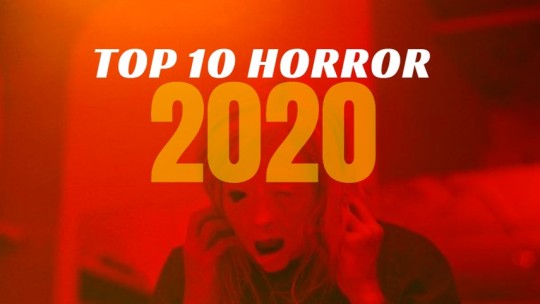
I know what you’re thinking: sounds kinda stupid – why would anybody care about a Top 10 list of the best movies of 2020…THREE months into the new year!? Well, as you’ve likely heard, 2020 was a year like no other, and as result of the ongoing global pandemic, movie release dates from 2020 were pushed back months, sometimes multiple times. Some films that were supposed to be released last year didn’t arrive until 2021, even though they’re officially considered “2020 films,” according to their profiles on websites like IMBD and Letterboxd.
And so, some of these so-called “2020 films” were not available (at least to me) until only recently, such as Saint Maud or The Dark and the Wicked. I feel like I’ve now had a chance to see almost all of the horror films I’ve wanted to see from last year. In this video, if you care to stick around, I will share with you my Top 10 favourite horror films of 2020. So, here we go…
#10/ The Dark and the Wicked:
A sister and brother return to the family homestead where their father is slowly dying and their mother is understandably distraught but also disturbed and distant. The siblings soon realize that something evil has invaded their family home as they are terrorized by whatever is slowly killing their father. Directed by the same guy behind 2008’s The Strangers, The Dark and the Wicked is at times bleak and unsettling, and it does a good job at keeping you intrigued in this family’s unnerving conflict. However, it felt a bit rushed and undeveloped at other times, and its ending left me somewhat unsatisfied.
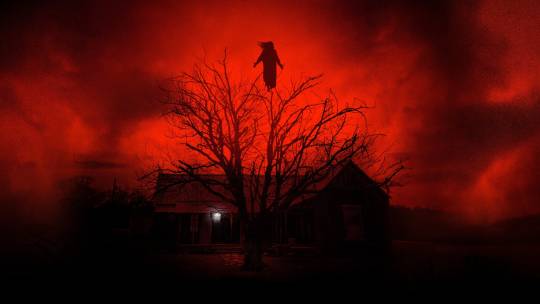
#9/ Relic:
Soon after Kay and her daughter Sam return to their remote family home following the disappearance of the family matriarch, the widowed Edna, they discover that something sinister has taken hold of both Edna and the house itself. Although Relic – which was co-produced by Jake Gyllenhaal and marked the feature directorial debut for Natalie Erika James – isn’t exactly offering up any enticing twists or salacious gore, or even a original concept for that matter, it relies on evoking dread and building tension to compel its audience to stay invested until the bitter end.
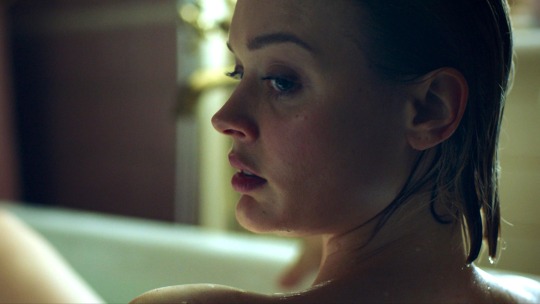
#8/ Amulet:
Taking its sweet time to unravel, Amulet is centered around Tomaz, an ex-soldier who is now homeless but is offered a place to stay at a decaying house in London, which is inhabited by a beautiful young woman named Magda and her dying mother. As the story moves along, we see that Tomaz is starting to develop feelings for Magda, who seems a bit…off. His feelings for her don’t wane even after Tomaz discovers that there’s something insidious going on in the attic of the house, where Magda’s mother is seemingly imprisoned. Toss in a suspicious nun and you’ve got yourself a creepy little film that seems to have fallen between the cracks.
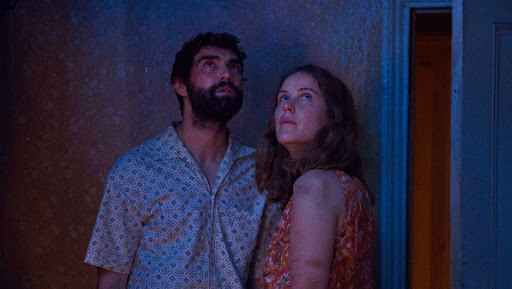
#7/ The Beach House:
One might argue that not a lot actually happens in The Beach House and that the payoff isn’t worth the investment, but if you go into this film with an open mind and zero expectations, you should at least be satisfied. Two troubled college students head to a deserted beach getaway to spend some time together, but end up struggling to survive alongside some unexpected guests as a mysterious infection disrupts their holiday. Although it is a slow build up to the film’s climax, it is a tense and intriguing ride along the way, as a series of unsettling events give way to an apocalyptic episode that feels almost like a throwback to the sci-fi films of the 1950s. Making his feature film directorial debut, Jeffrey A. Brown elicits with The Beach House those brooding existential thoughts that lay dormant in the deep boroughs of our minds.
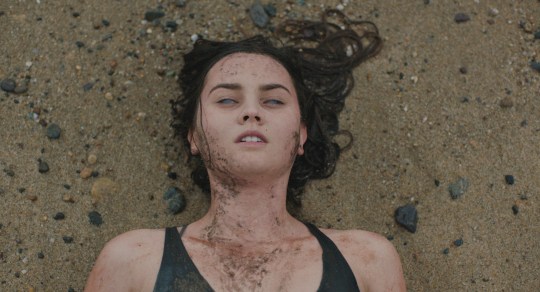
#6/ The Invisible Man:
There’s always an elevated risk when making a modern film based on an old story that has already been told through cinema numerous times before. The last time H.G. Wells’ 1897 novel The Invisible Man had been adapted by Hollywood was in 2000’s Hollow Man, which was panned by critics despite making a sizeable profit. The 2020 adaptation is far superior and is perhaps the best adaptation of Wells’ classic in any medium. Elizabeth Moss gives a stellar performance that draws real emotion, so that we agonize alongside her as she is essentially haunted by a relentless ghost hellbent on controlling every aspect of her life. We live in an era when technology has advanced enough to bring this 124-year-old story to life like never before, while a polished script and an exceptional lead performance gives The Invisible Man a deeper level of emotion and terror.

#5/ Saint Maud:
For most of Saint Maud it is unclear whether certain experiences are actually happening in reality for the main character or if it’s all simply in her head, as some sort of mental breakdown caused by a work-related tragedy. Maud is a young hospice nurse and a newly-converted Roman Catholic who suddenly becomes obsessed with “saving the soul” of the woman she is currently taking care of, Amanda, a hedonistic dancer with a chronic illness. Maud’s behaviour worsens, as does her mental state, as horrific scenes and visions make us question if she’s actually losing her mind or experiencing something beyond this world. Saint Maud is an A24 feature by the way, so that should be enough to know what you’re getting here in terms of quality.
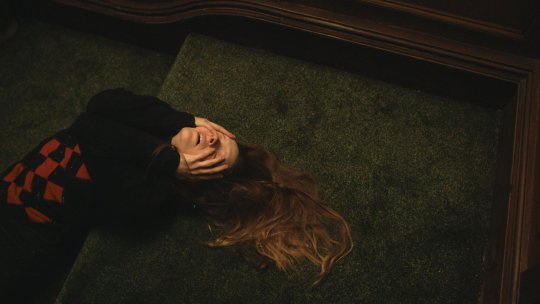
#4/ The Lodge:
Isolation is often embraced as a way to pad a horror film’s fear factor, and it works especially here in The Lodge, as a soon-to-be stepmom becomes stranded at a remote holiday home in the middle of winter with her fiance’s two children. The kids begin to untangle the dark past of their stepmom-to-be and a series of disturbing events transpire as their hope for survival fades. The Lodge is a dreary, atmospheric slow burn that leaves you somewhat unsettled. With its wintry backdrop, stylish sequences, and almost claustrophobic dread, the film doesn’t ever allow its audience to feel at ease for long, insisting that an underlying foreboding remain intact throughout. Although I found the ending somewhat disappointing, I immediately began to concoct a possible prequel that would delve into the backstory of the film’s lead character. One can hope.
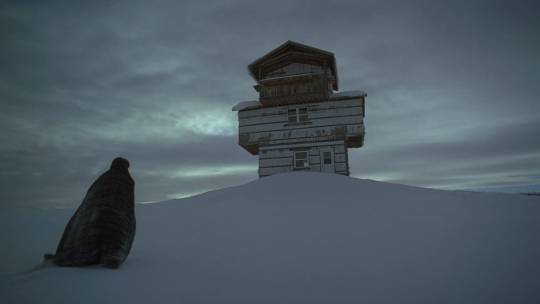
#3/ Host:
It’s increasingly difficult to be innovative and original when it comes to horror films these days, especially in the particular genre of so-called “found footage.” Rob Savage’s Host, however, comes off as something different, setting itself apart from most films in this realm in various ways. It centers around six friends who hold a séance via Zoom during a COVID lockdown, guided (at first) by a medium they hired. The séance then takes a dark turn and things soon escalate into madness. Sure, there are elements in Host that are prevalent in numerous horror films, but it uses a modern and topical way to implement them, while also refusing to overstay its welcome by cueing the credits less than an hour in. Overall, this film’s popcorn-and-Saturday-night-movie fun factor is why it ranks so high on this list.
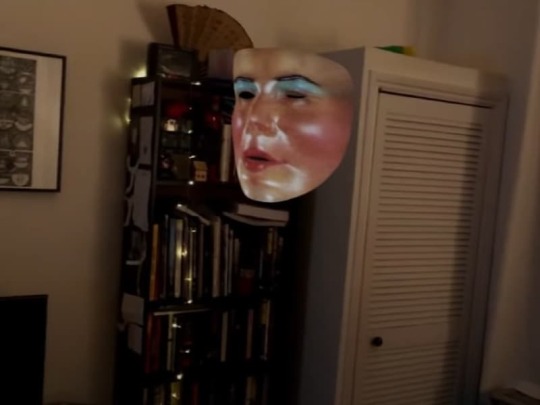
#2/ Possessor:
It’s always a treat to come across an original idea, especially when it’s within the horror realm, and Possessor is certainly unlike anything else I’ve seen in awhile. Andrea Riseborough plays an elite corporate assassin who uses brain-implant technology to take control over other people’s bodies in order to kill high profile targets, though with every mission she gets further and further away from her true self. With her latest possession, she becomes trapped in the mind of a man who threatens to obliterate her for good. It is a provocative vision by director-writer Brandon Cronenberg, who just so happens to be the son of legendary Canadian filmmaker David Cronenberg, and it serves as a disturbing piece of dystopian fiction that is even more frightening because it isn’t too far beyond belief.
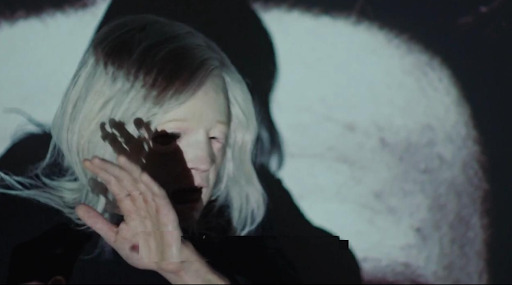
And because everyone else is doing it, here are five honorable mentions that narrowly missed the list:
- The Call
- Color Out of Space
- Don’t Listen
- The Mortuary Collection
- Porno
#1/ His House:
In addition to its emotional storytelling and genuine moments of terror, His House – from first-time director Remi Weekes – sheds a light on the plight of refugees in a way that feels both respectful and empathetic. After a Sudanese couple make a harrowing escape from their war-torn homeland, they are granted asylum in England, where they struggle to adjust and fit in. They are assigned a shabby house on the outskirts of London, where the couple begin to experience terrifying and unexplainable events. His House is built around a fresh concept, two fantastic leads, and some truly haunting imagery, and I wish that more horror directors would put as much effort into quality filmmaking as Weekes did here. If this is his first venture into feature filmmaking, I am excited to see what his future has in store.
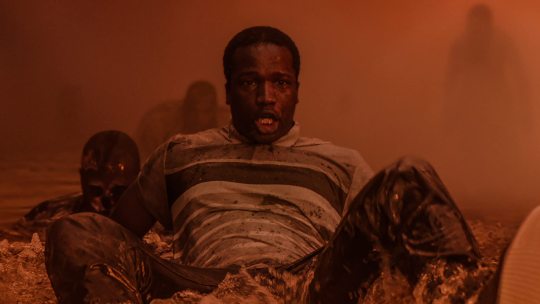
There you have it, my Top 10 favourite horror films of 2020. What did you think and were any of these titles on your own Top 10 list? Please tell me your thoughts and recommendations in the comments below.
youtube
5 notes
·
View notes